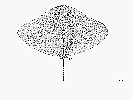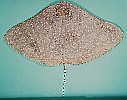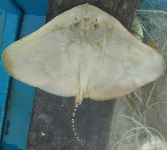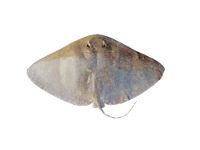Gymnura poecilura
(Shaw, 1804)
Longtail butterfly ray
Classification: Elasmobranchii Myliobatiformes Gymnuridae
Reference of the original description
General zoology or systematic natural history. G. Kearsley, London, vol. 5, Pisces, part 2, i–vii, 1–463
General zoology or systematic natural history. G. Kearsley, London, vol. 5, Pisces, part 2, i–vii, 1–463
Synonyms / new combinations and misspellings
Gymnura cf. poecilura, Gymnura crooki, Gymnura (Gymnura) poecilura, Pteroplatea annulata, Pteroplatea poecilura, Raja poecilura, Trygon kunsa, Trygon paecilurus, Trygon poecilurus, Urogymnus poecilura
Gymnura cf. poecilura, Gymnura crooki, Gymnura (Gymnura) poecilura, Pteroplatea annulata, Pteroplatea poecilura, Raja poecilura, Trygon kunsa, Trygon paecilurus, Trygon poecilurus, Urogymnus poecilura
Types
Gymnura poecilura
Neotype: CMFRI: GA.10.4.2.6;
Gymnura crooki
Holotype: USNM: 93388 (not 6830);
Pteroplatea annulata
XXXX: No types known;
Gymnura poecilura
Neotype: CMFRI: GA.10.4.2.6;
Gymnura crooki
Holotype: USNM: 93388 (not 6830);
Pteroplatea annulata
XXXX: No types known;
Description :
Citation: Gymnura poecilura (Shaw, 1804): In: Database of modern sharks, rays and chimaeras, www.shark-references.com, World Wide Web electronic publication, Version 01/2026
Please send your images of "Gymnura poecilura" to info@shark-references.com

Gymnura poecilura (Shaw, 1804), male, 24.3 cm DL, 48.7cm DW, 1.235g, Bangladesh © G. M. MASUM BILLAH, Program Coordinator- Marine Mega-Fauna & Fisheries, Wildlife Conservation Society- Bangladesh Program (masumwcsbd@gmail.com)

Gymnura poecilura (Shaw, 1804), male, 24.3 cm DL, 48.7cm DW, 1.235g, Bangladesh © G. M. MASUM BILLAH, Program Coordinator- Marine Mega-Fauna & Fisheries, Wildlife Conservation Society- Bangladesh Program (masumwcsbd@gmail.com)
Common names
 Long-tailed butterfly ray,
Long-tailed butterfly ray,  Longtail butterfly ray,
Longtail butterfly ray,  Longtailed butterfly-ray
Longtailed butterfly-ray
 Long-tailed butterfly ray,
Long-tailed butterfly ray,  Longtail butterfly ray,
Longtail butterfly ray,  Longtailed butterfly-ray
Longtailed butterfly-ray
Short Description
Diagnosis after MUKTHA, AKHILESH, SANDHYA, JASMIN, JISHNUDEV & KIZHAKUDAN, 2016 [24385]: A medium-sized (<100 cm DW) Gymnura species with the following characters. Body compressed and thin, pectoral fin expanded–rhomboid in shape; disc width 1.9–2.0 times disc length; snout short with a weak apical lobe, pre oral length 6.9–9.2 % disc width, pre-orbital snout 0.3–0.4 in head length; snout angle 137–155°; pectoral angle 100–123°; orbits small; tentacle absent behind spiracle; mouth small, width 1.2–1.5 in inter-nasal width; distance between first gill slits 2.2–2.7 times inter-nasal distance; distance between fifth gill slits 1.4–1.8 times inter-nasal distance; tail slender and short; less than disc length; from cloaca to tail tip nearly as long as snout–vent length; post-vent length 31.7–45.5 % disc width; dorsal fin absent; a faint dermal ridge present/absent on dorsal and ventral side . Tail spines present or absent; juveniles mostly without spines. Dorsal surface smooth, without thorns/denticles; disc uniform brown to olive green with or without scattered pale/ light yellow spots; dorsal surface uniformly brown/grey coloured with small dark/brown spots covering entire dorsal surface in juveniles (<30 cm DW); ventral disc uniformly whitish; about 9–12 black bands on tail alternating with white bands (in juveniles, conspicuous black saddles in the white bands).
Diagnosis after MUKTHA, AKHILESH, SANDHYA, JASMIN, JISHNUDEV & KIZHAKUDAN, 2016 [24385]: A medium-sized (<100 cm DW) Gymnura species with the following characters. Body compressed and thin, pectoral fin expanded–rhomboid in shape; disc width 1.9–2.0 times disc length; snout short with a weak apical lobe, pre oral length 6.9–9.2 % disc width, pre-orbital snout 0.3–0.4 in head length; snout angle 137–155°; pectoral angle 100–123°; orbits small; tentacle absent behind spiracle; mouth small, width 1.2–1.5 in inter-nasal width; distance between first gill slits 2.2–2.7 times inter-nasal distance; distance between fifth gill slits 1.4–1.8 times inter-nasal distance; tail slender and short; less than disc length; from cloaca to tail tip nearly as long as snout–vent length; post-vent length 31.7–45.5 % disc width; dorsal fin absent; a faint dermal ridge present/absent on dorsal and ventral side . Tail spines present or absent; juveniles mostly without spines. Dorsal surface smooth, without thorns/denticles; disc uniform brown to olive green with or without scattered pale/ light yellow spots; dorsal surface uniformly brown/grey coloured with small dark/brown spots covering entire dorsal surface in juveniles (<30 cm DW); ventral disc uniformly whitish; about 9–12 black bands on tail alternating with white bands (in juveniles, conspicuous black saddles in the white bands).
Distribution
Indo-Pacific from Southern Arabian Sea coasts of India to Bay of Bengal, Srilanka to Indonesia and China. [24385] Source: www.gbif.org
Indo-Pacific from Southern Arabian Sea coasts of India to Bay of Bengal, Srilanka to Indonesia and China. [24385] Source: www.gbif.org
Human uses
fisheries: commercial
fisheries: commercial
Biology
Exhibit ovoviparity (aplacental viviparity), with embryos feeding initially on yolk, then receiving additional nourishment from the mother by indirect absorption of uterine fluid enriched with mucus, fat or protein through specialised structures [733]. Distinct pairing with embrace [17086]. Viviparous with 1–9 embryos [24385] Inhabits coral reefs (Ref. 58534). Found on sandy bottoms of shallow inshore waters and offshore banks [20218].
Exhibit ovoviparity (aplacental viviparity), with embryos feeding initially on yolk, then receiving additional nourishment from the mother by indirect absorption of uterine fluid enriched with mucus, fat or protein through specialised structures [733]. Distinct pairing with embrace [17086]. Viviparous with 1–9 embryos [24385] Inhabits coral reefs (Ref. 58534). Found on sandy bottoms of shallow inshore waters and offshore banks [20218].
Size / Weight / Age
Females grow to at least 92 cm DW, males 55 cm DW; males mature at 45 cm DW and females 67 cm DW; [20218])
Females grow to at least 92 cm DW, males 55 cm DW; males mature at 45 cm DW and females 67 cm DW; [20218])
Habitat
demersal; marine
demersal; marine
Dentition
Upper jaw moderately arched on either side of symphysis; lower jaw arched, symphysial region concave, lateral margins slanting. Teeth not exposed in normal view. Lateral teeth not usually concealed by lobe of nasal curtain. Teeth small, uni-cuspid, one short sharp conical cusp on a somewhat swollen base, arranged in longitudinal rows. [24385]
Upper jaw moderately arched on either side of symphysis; lower jaw arched, symphysial region concave, lateral margins slanting. Teeth not exposed in normal view. Lateral teeth not usually concealed by lobe of nasal curtain. Teeth small, uni-cuspid, one short sharp conical cusp on a somewhat swollen base, arranged in longitudinal rows. [24385]
Remarks
shark-references Species-ID=2580;
shark-references Species-ID=2580;
Parasites (arranged by Jürgen Pollerspöck)
Cestoda
Nematoda
Cestoda
- Acanthobothrium halehae Maleki, Malek & Palms, 2019 [27361] [28741]
- Acanthobothrium kurdistanense Maleki, Malek & Palms, 2019 [27361] [28741]
- Acanthobothrium makranense Maleki, Malek & Palms, 2019 [27361] [28741]
- Acanthobothrium micracantha Yamaguti, 1952 [16175]
- Acanthobothrium omanense Maleki, Malek & Palms, 2019 [27361] [28741]
- Acanthobothrium persicum Maleki, Malek & Palms, 2019 [27361] [28741]
- Proemotobothrium southwelli Beveridge & Campbell, 2001 [15730]
- Pterobothrium lesteri Campbell & Beveridge, 1996 [15730] [15789] [19555] [21816]
Nematoda
- Hysterothylacium poecilurai Rajyalakshmi & Sreeramulu, 2005 [21461]





















